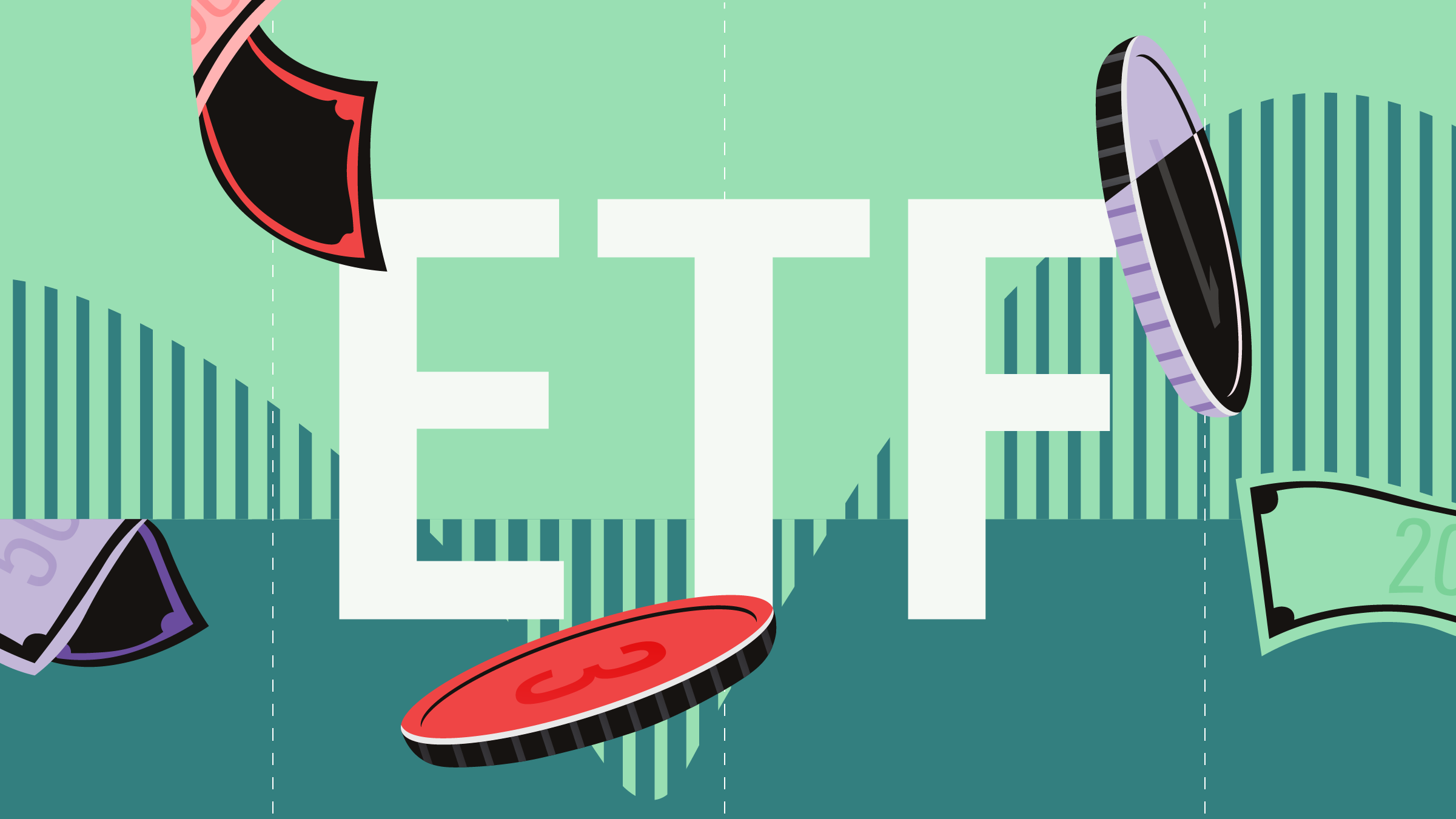Jeremy Glaser: For Morningstar, I'm Jeremy Glaser. I'm here at the 2013 ETF Invest Conference with Heidi Richardson. She is a global investment strategist for BlackRock. We're going to look at some of the big trends in the market right now and what it means for investors.
Heidi, thanks so much for joining me.
Richardson: Thanks for having me.
Glaser: Let's start with the government shutdown. That's obviously top-of-mind at the moment. What impact do you think the shutdown is going to have on, particularly, the equity markets? Are we in store for some more volatility?
Richardson: Well, I think that looking at what's happening in U.S. Fed now with economic policy, whether it's the shutdown, whether it's looking at the debt ceiling that were coming up upon or whether it's a new Fed chairman, we're likely to have more volatility not only in the U.S. equity markets, but also in the fixed income market.
I think if we look at the shutdown, it depends how long we're shutdown. The contribution to economic growth that will detract from is unlikely to be too much if this is a short-term shutdown, but I think it's just more the longer it goes, the more volatility that we're likely to see in the system.
Glaser: How about the debt ceiling, though? Is that a bigger worry for you?
Richardson: The debt ceiling absolutely is a bigger worry. If we think about the debt ceiling, it could go now to the 11th hour in terms of coming to some resolution on the debt ceiling and continuing to raise the limits on that. The worrisome thing is if we potentially defaulted on our debt, which I think is highly unlikely, but if we default on the debt, then it's going to be much more of an issue on global financial markets, not just the U.S. market.
Glaser: Is there anything investors can do in terms of preparing for a potential debt-ceiling problem, or is it just kind of risk that will be difficult to diversify away?
Richardson: I would say if you had money that you were thinking about putting in the market over the next couple of weeks, you might want to wait until Oct. 17 in terms of waiting for that to happen. If for some reason, we did actually breach the debt ceiling and we defaulted, we could have a potential downgrade on U.S. Treasuries and our debt. We could see a run in gold because it would be the one flight to safety that we would be able to see in the marketplace.
Glaser: Another policy uncertainty from Washington has been from the Federal Reserve. People are broadly expecting a taper in the September meeting. It didn't happen. When do you think the taper is going to come, and is it a really important event that people should really be watching out for?
Richardson: I think a couple of things. I'll step back first with looking at the tapering because I think a lot of people don't understand what tapering is, and they confuse it with rising interest rates in terms of the Fed deliberately raising interest rates. If we think about the tapering aspect of itself, what the Fed's being doing over the last couple of years is a quantitative easing.
We saw Quantitative Easing 1, Quantitative Easing 2, Quantitative Easing 3, which some refer to as Quantitative Easing Infinity, and if we look at that quantitative easing, it's repurchasing of Treasuries and mortgage-backed securities of $85 billion a month from the Fed. If they taper that what they're saying is they're not going to do $85 billion, but they're going to reduce that. So maybe it's $70 billion, maybe it's $75 billion, maybe it’s something different than that, but they're going to reduce it. And the reason why they reduce it is because they believe that the U.S. economy is improving; improving from an economic growth standpoint, improving from the job standpoint more importantly.
So if we look at the unemployment rate, the unemployment rate is improving and not improving artificially because people are falling off and the participation rate is lower, but really truly structurally improving and jobs are being created. That's the first thing. If they do taper, it's actually because of good news.
The second thing is, they’ll taper for a while, they'll continue to reduce the purchasing, and then eventually they'll stop the quantitative easing. That's the second thing that will happen. By the time they raise interest rates it's a couple of years out. And so, I think that sometimes we confused tapering with raising interest rates and thinking of this easy money drying up and liquidity drying up in some of these markets. But they're very, very separate and distinct situations.
Glaser: But in the discussion of the taper, we did see some pretty big moves in the Treasury market. Is that just kind of a bit of a dress rehearsal for what we can expect when it really happens?
Richardson: Well, it's interesting when we saw those big moves because they weren't based truly on fundamentals. Not only did we see large swings of over 100 basis points or 1% in the Treasury markets, but we saw massive swings in high-yield market. We saw massive swings in the muni market and the mortgage market. We saw what happened with mortgage rates. So, I think that it wasn’t based on fundamentals in terms of some of the shifts, but I think it was just market reaction on the Fed's comments, whether they were hawkish or dovish.
I think you will see more volatility more importantly than it being a dress rehearsal; sure, we'll some changes when it does happen, when we start to taper. But I don’t think you'll see as wide a swing as what we saw in this first one.
Glaser: Where do you expect Treasuries to be then, say, over the next 12 months?
Richardson: Well, I'd say that we're forecasting 10-year Treasuries to be somewhere between 2.50%-2.75% for the end of the year, and then on an upward slope, potentially finishing 2014 at maybe 3.25% or 3.50%.
Glaser: One of the other victims of the taper talk were emerging markets, which got hit pretty hard with the threat of this easy money being at least not taken away, but tapered in some way. Do you think that emerging markets are a good investment right now? Has that underperformance created some opportunities there?
Richardson: When we take a look at emerging markets, particularly emerging-markets equities, when we look at the high-quality nature of some of these individual countries--and we look at their current account surpluses that we're running; we're looking at the foreign exchange reserves that they had; there is good corporate policy; there is good corporate governance--I think that the opportunities set for emerging markets over the next three to five years, particularly in the equity side, would be one of our favorite overweights right now.
There will likely be more volatility over the next few months with this talk of tapering, but we've already started to see flows coming back into emerging markets. When we look at the broad-based index, the valuations in terms of price/earnings we're trading at a five-year discount to the developed economies, so I think people were starting to look at and question whether this has bottomed because we know that fundamentally, a lot of these countries are still very, very sound.
As we look at that, in the last 30 days we've seen a lot of flows go back into not only the emerging markets, but some of the developed non-U.S. markets, as well.
Glaser: Shifting gears a little bit into fixed income. Obviously finding income in this environment is not an easy task. Was there anything that looks like it could provide some of that right now? Where are the fixed-income market do you think folks should be looking?
Richardson: I'd say in the fixed-income market, we've been advocating to our clients to reduce duration all year because of the interest-rate sensitivity to that. I would say that if you are still long on the curve particularly in the Treasuries, shorten that up as much as you can, and think about having a credit rotation. So, if you were fully in interest-rate-sensitive areas of the marketplace, think about going into more credit-sensitive areas of the marketplace.
One of our favorite spots in terms of the credit is looking at the single B issuance, so essentially the lowest rung of the investment-grade credit. I think there is some opportunity set with the high-yield marketplace, as well. I think if there were some more dislocation, and we saw a widening of spreads, it could be an entry point for looking at the high-yield marketplace. And then there are some areas of floating rate, as well, so you can try to help hedge against any of the potential rising interest rates.
Glaser: Some investors have been using dividend-paying stocks to supplement their income with rates so low. Have valuations become too stretched in order for that to be a viable strategy right now?
Richardson: I think, it depends on the sector. If we look at utilities in the U.S. as an example, I think utilities have become stretched. If we look at utilities historically, they traded at a discount to the broad market, and now they are trading at a premium. They are very expensive because of the flight to the dividend-paying stocks, the flight to quality, and the defensive nature of the market earlier in the year. I think that if we look at that, we'd rather have exposure to energy, there is a good dividend component to energy, but more of a cyclical trade as we move forward.
Outside of the U.S. though, I think the dividend story still has room to go. If we look at the valuations of some of the dividend payers outside of the U.S., they are looking very, very attractive, and the yields in some cases in some of these countries in the developed economies, in particular, are more than double what's being offered with the S&P 500.
Glaser: Heidi, we really appreciate you taking the time today.
Richardson: My pleasure. Thanks so much for having me.
Glaser: For Morningstar, I'm Jeremy Glaser.

















